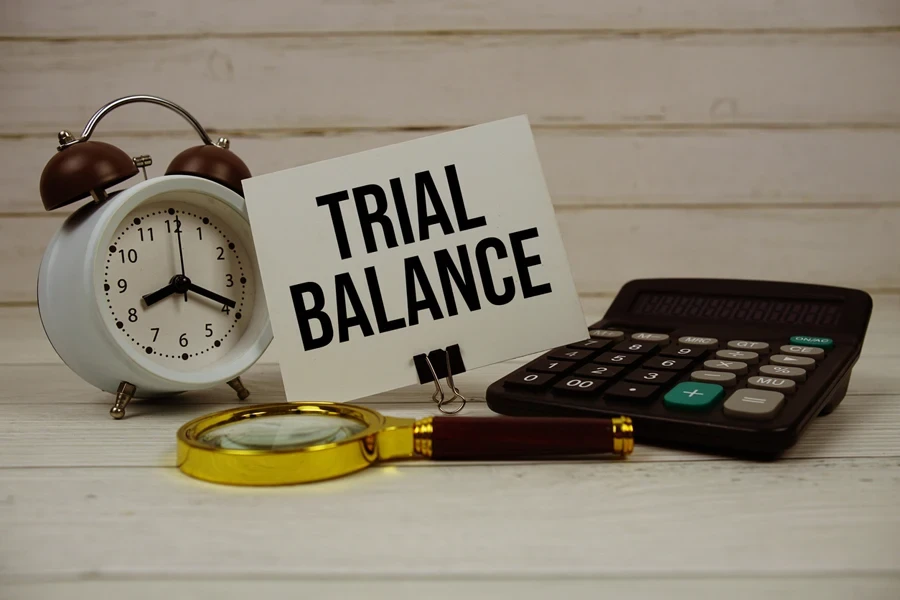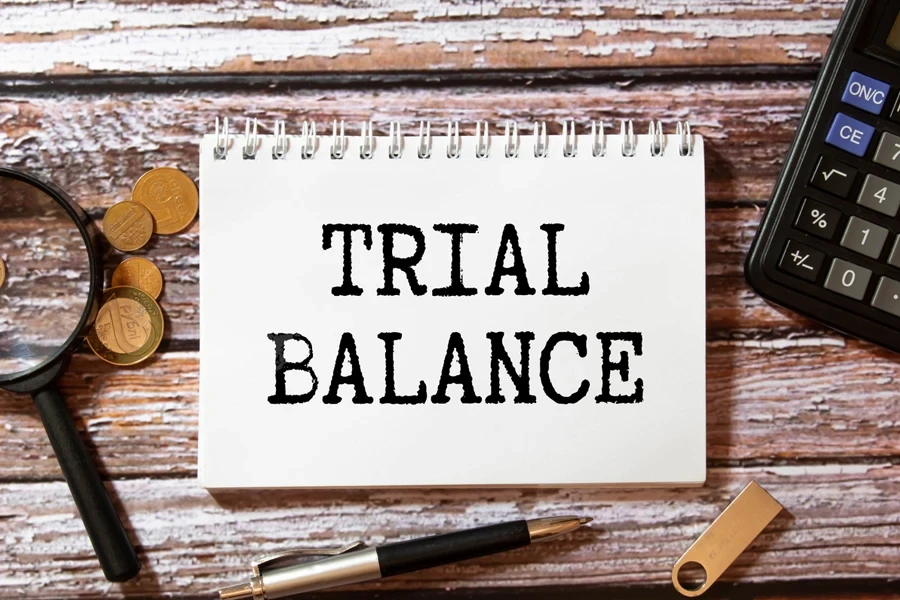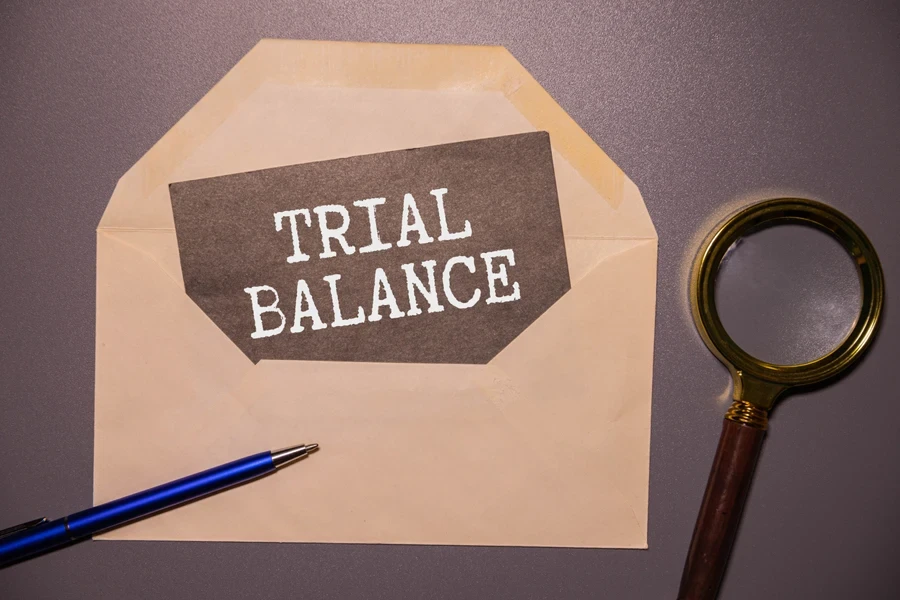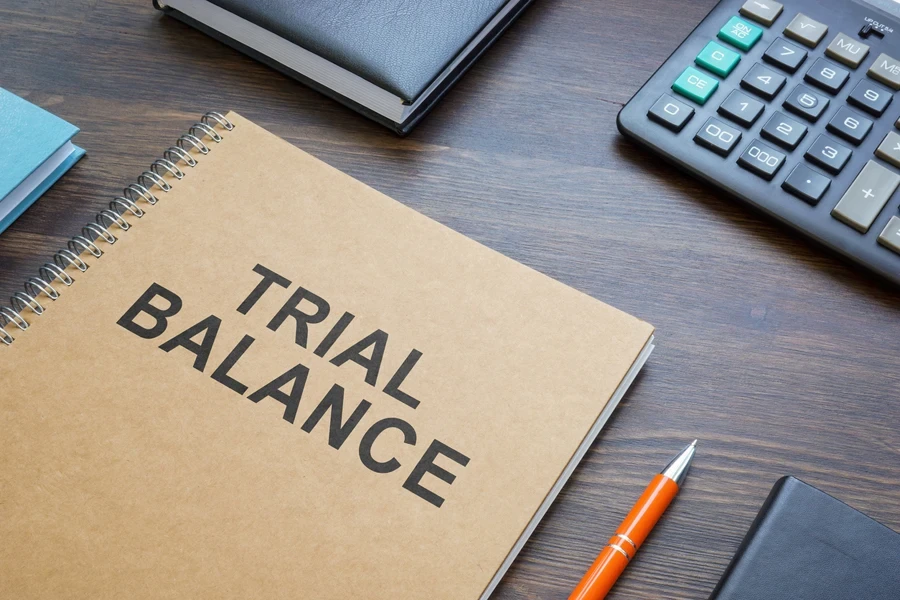Sometimes, business finances can feel like a never-ending puzzle. Imagine tracking income, paying expenses, and ensuring everything adds up, only to find an error in your books that throws everything off.
According to a study from Indiana University, 60% of accounting mistakes come from basic bookkeeping errors. But that’s where many businesses use the trial balance. It’s a simple yet powerful tool that helps you catch mistakes before they become big problems.
Think of it as a financial checkpoint, ensuring every dollar is accounted for before moving forward. Want a deeper look at what trial balance is? Keep reading to learn more about how trial balance works and why you should care about it (even if you use accounting software).
Table of Contents
What is a trial balance?
Why does a trial balance matter?
How does a trial balance work?
What does a trial balance include?
Trial balance vs. balance sheet: What’s the difference?
How often should you prepare a trial balance?
Who uses a trial balance?
How to prepare a trial balance (step-by-step)
Step 1: Calculate account balances
Step 2: Transfer balances to the trial balance
Step 3: Add up your debit & credit columns
Step 4: Check for errors if totals don’t match
Step 5: Close the trial balance
Tips to ensure accuracy in your trial balance
Rounding up
What is a trial balance?

A trial balance is a financial report that lists all the accounts in your general ledger, showing their debit and credit balances. It’s not an official financial statement (hence the word “trial”) but an internal tool to check if your books are balanced.
If your total debits equal total credits, congrats! Your accounts are balanced. If they don’t, that’s your cue to find and fix the error before you prepare financial statements or face an audit.
Why does a trial balance matter?
- Detects bookkeeping mistakes before they snowball
- Ensures your financial statements are accurate
- Helps you spot missing or duplicated transactions
- Reduces stress before audits or tax filings
How does a trial balance work?

If you use double-entry accounting, every transaction has two parts—a debit and a credit—which should always balance. For example, you first record a transaction when it happens and update it again when you receive payment. Remember that all accounts in this record should balance out to zero.
If the total debits and credits don’t match, you’ve got an issue that needs fixing. More importantly, a trial balance is a separate summary of all transactions from your general ledger, helping you check that everything adds up correctly with accurate records.
What does a trial balance include?
A trial balance report consists of three main columns:
- Account names: Lists all accounts, e.g., assets, liabilities, income, and expenses.
- Debit balances: Shows total debits for each account.
- Credit balances: Shows total credits for each account.
Trial balance vs. balance sheet: What’s the difference?

People often confuse a trial balance with a balance sheet, but they serve different purposes. The trial balance is an internal tool for checking whether accounts are balanced. In contrast, the balance sheet is a key financial statement that provides a snapshot of a company’s overall economic health.
Businesses should create balance sheets yearly and share them with financial institution investors, making them essential for managing their finances. On the other hand, a trial balance just helps with internal checks.
How often should you prepare a trial balance?
- Consider preparing at least one trial balance sheet for every reporting period (monthly or quarterly).
- Prepare a trial balance whenever you suspect an accounting error.
- Trial balances can help before preparing financial statements or taxes.
Note: The more frequently you prepare a trial balance, the less chance of errors piling up.
Who uses a trial balance?

Accounting and bookkeeping professionals use a trial balance to check a company’s financial records. While modern accounting software helps reduce errors, trial balances are still valuable for internal reviews.
For example, senior management may find trial balance reports useful because they help show key financial information. Likewise, accounting teams rely on them for regular reviews or to identify potential mistakes.
How to prepare a trial balance (step-by-step)

Step 1: Calculate account balances
Businesses record all their transactions in a general ledger, assigning each one a journal entry and linking them to the right account. This is where most information for the trial balance comes from.
Depending on your accounting system, you might need to group different expenses and income sources. For example, your account payables might have several smaller transactions to add up before transferring the total to your trial balance.
Additionally, businesses must close each balance to keep their focus on specific time frames, usually their accounting cycle (monthly or quarterly). However, they can also review their balance for shorter periods when necessary.
Step 2: Transfer balances to the trial balance
Next, move the closing balances in your general ledger to the trial balance, ensuring that all accounts match between the two. Record the total credit in the left column (next to the account names) and the total debit in the far-right column.
Pay close attention here! It’s easy to record amounts in the wrong column or under the wrong account. Even a small mistake can throw off your entire trial balance, wasting time trying to find and fix the error.
Step 3: Add up your debit & credit columns
Add up all your credit and debit balances. If you’ve followed the steps correctly, this should be a quick and straightforward process. If you’re using spreadsheet software like Microsoft Excel, you can also use a formula to do the match for you automatically.
Then, check your final totals. The credit and debit balances should match. If they do, it means your books are balanced. Suppose they don’t; don’t worry. The whole point of a trial balance is to catch these differences early so you can find and fix any mistakes before they become bigger issues.
Step 4: Check for errors if totals don’t match
You’ll need to figure out why your numbers don’t match. So, start by looking for common mistakes, like entering data in the wrong column or account, misplaced decimal points, and forgetting to enter a transaction. Once you find the error, go back through steps three to five and check if your totals balance.
Note: Keep repeating this process until everything lines up correctly.
Step 5: Close the trial balance
After finishing the process, you can close your trial balance and save the document. It may come in handy if you need to review or extend the period later. If you’re using spreadsheet software, consider keeping a template with built-in formulas to make future trial balances quicker and easier.
Tips to ensure accuracy in your trial balance
- Use accounting software: Consider investing in tools like QuickBooks, Xero, and FreshBooks, which auto-generate trial balances. These tools will help reduce errors common with manual data entry. Some even automate the process, pulling data from invoices and other financial documents.
- Create records regularly: The more frequently you prepare trial balances, the easier it is to catch small mistakes before they become bigger problems.
- Streamline information flow: Don’t mix up your accounting data. You can use electronic systems to improve information flow and keep everything organized in one place.
Rounding up
While many see a trial balance as an accounting exercise, others see it as a critical tool that helps businesses maintain financial accuracy, prevent costly mistakes, and ensure books are balanced.
Whether you’re a small business owner or an accountant, running a trial balance regularly can save you time, stress, and money in the long run. Even if you don’t like the idea of manual data entry, you can always automate the process with accounting platforms.



